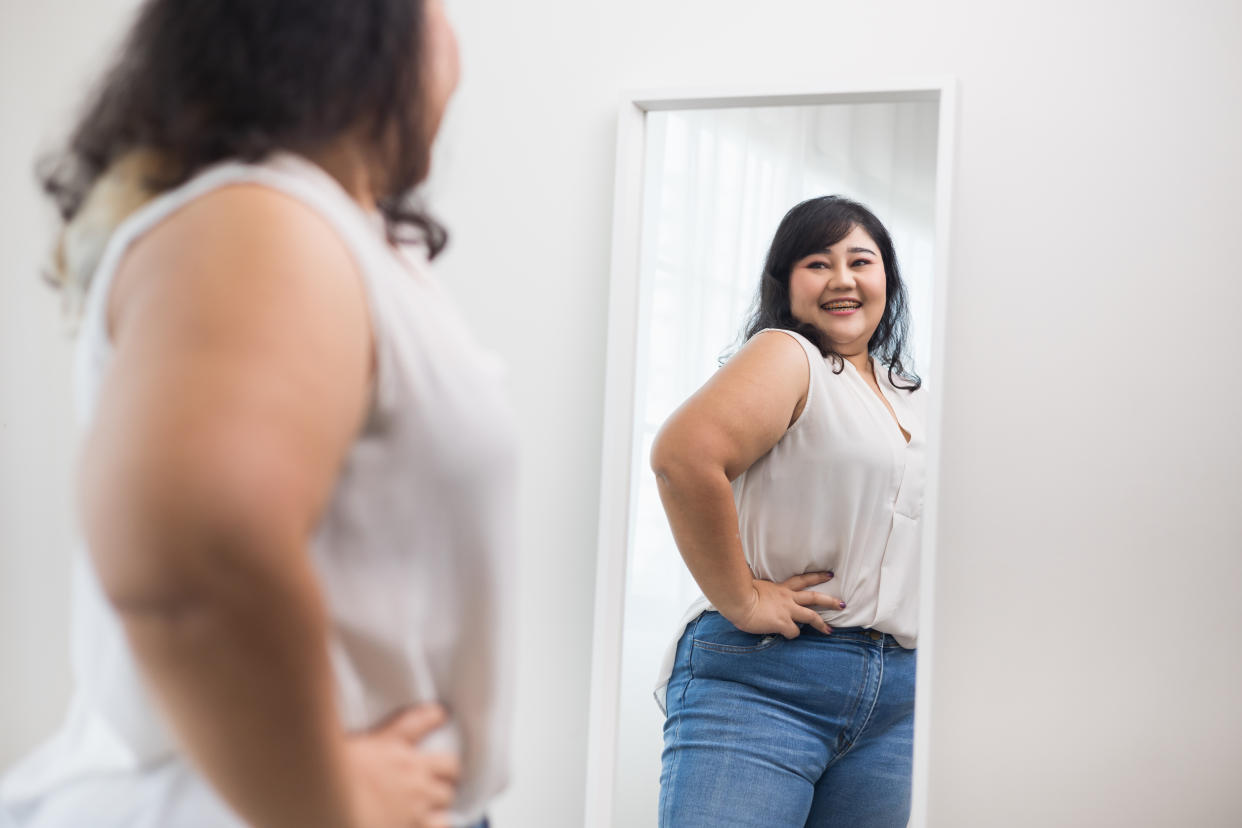How fatphobia influences what fashions are considered 'flattering' — and why plus-size women are tired of being told to 'dress for your figure'

Meghan De Maria is a journalist and body liberation advocate whose work has appeared in Glamour, Cosmopolitan and more. When she's not writing, she leads the Plus Raleigh group in North Carolina's Triangle area, connecting plus-size people for support and community.
If you don't have "legging legs," they aren't for you. You should avoid shorts that hit the biggest part of your thighs. And definitely don't wear horizontal stripes.
From teen magazines to your nosy mother-in-law, these nuggets of so-called advice are everywhere. Women of all sizes are told to "dress for your figure" and wear clothes that society has deemed "flattering." But what if — and hear me out — everyone just wore what they wanted?
Calling items of clothing "flattering" only on certain bodies is, in itself, fatphobic. Crop tops that show off gloriously full bellies and sleeveless blouses that put stretch marks on display are never what people who use the term have in mind, even if these items make the wearer feel the most confident. Flattering your body is about hiding, minimizing and shrinking your style preferences to comply with societal norms.
As plus-size fashion editor Billie Bhatia told the Guardian in 2020, people tend to use "flattering" as a euphemism for "slimming." But if you used the latter term, you'd be called out — and rightfully so. People in larger bodies are constantly told not to take up space — in too-small public seating, in being disproportionately censored on Instagram, in still-legal workplace weight discrimination cases. Now we're expected to diminish our style to make other people more comfortable? No thanks.
Women's clothing trends have long been designed to accentuate certain features (often to cater to the male gaze), even before "flattering" was a commonly used term. In the heyday of teen magazines as the go-to for fashion advice, we let our body shapes be compared to fruit — seriously, why? — and used that to determine what we "should" wear. I distinctly remember buying printed swimsuit tops and solid bottoms because my favorite magazine suggested pear-shaped girls do so to "draw the eyes upward." The implication, of course, is that people in smaller bodies can buy the trendy crop top, wear the shorts, work out in the leggings. But larger bodies are problems to be hidden, and the people living in them aren't worthy of lives as full as their smaller counterparts'.
Calling something "flattering" implies that it accentuates your "best" physical features and hides your so-called flaws. But if the world weren't inherently fatphobic, different body shapes wouldn't be seen as flawed in the first place. Yes, different clothing styles will look different on various body types. But what if we saw that as a neutral thing, rather than a negative one? People in larger bodies don't need to live in the shadows of shapewear and "control top" tights or to wear dark colors that minimize our appearance. Your body is just that: a body. It carries you through the world each day. Why should you hide that?
People already know I'm fat; they're not going to be shocked if there's a visible belly outline when I wear my favorite bodysuit. And your friends aren't going to think less of you if you roll up to brunch wearing shorts that leave a bit of cellulite on display. In reality, it's empowering to buck the so-called "flattering" advice intentionally, and to dress for yourself and no one else. Want to tell me a certain dress makes me "look fat"? You're right — because I am fat! Congratulations on having eyesight.
Wearing clothes that express who we are is one of the few ways people in larger bodies can take up space in their day-to-day lives. (And when women's plus-size fashion often consists of less-than-stylish cold-shoulder tops and matronly florals, even that isn't easy.) If you're uncomfortable with someone's outfit choices, that's a "you" problem. They aren't dressing for you; they're dressing for themselves, to claim an ounce of power in a world that's quite literally built against them.
If you think, for instance, plus-size folks are going to skip the tenniscore trend because they have thick thighs or that they'll shy away from crop tops or balletcore's fitted silhouettes, think again. Our bodies are ours — and we'll adorn them however we want.
